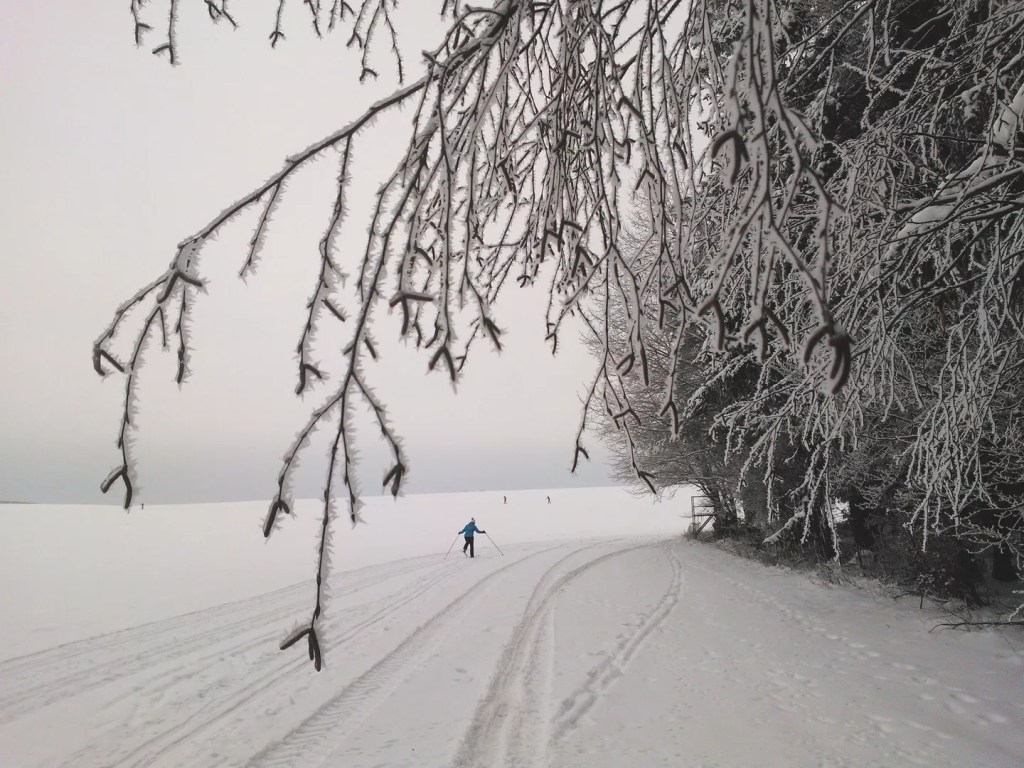The sun is one place David Noland hasn’t been yet. A writer and adventurer, Noland has trekked through some of the world’s remotest corners—climbed Mount Kilimanjaro in Africa, hitchhiked the backroads of Belize, and navigated the jungles of Trinidad—all the while detailing those adventures for National Geographic Adventure, Outside magazine, and two books. However, excluding his stint flying a an ancient Piper Cub from coast to coast, Noland’s adventures have remained largely earthbound.
But no matter: When he set out to build an “old man’s age-in-place home” (his words) he set his sights not on the local Home Depot, but on the star 93 million miles away. Or, more specifically, on harnessing as much of that star’s energy to keep he and his “not-quite-yet-old” wife (also his words, and a more apt description) not just comfortable through all four seasons but with enough juice to power future adventures. “The plan was to make our house small, simple, one floor, close to the road, and without a wood stove,” Noland explains. “Also, in the bargain, I wanted to make it a super-efficient, zero-carbon construction that meets all Passive House standards.”

Undertaking that task led Noland on a whole different sort of journey. Like all grand adventures, it required plenty of research, some new skill building, and a vision. As with any great trek, Noland set out with a plan. And like many of those great journeys, the plan inevitably went off the rails. However, as Noland explains in the intro to his essay collection Travels Along the Edge, “It’s not really an adventure unless, at some point during the trip, I say to myself, ‘What the fuck am I doing here?'”
Out of the Woods
A native of Indiana, Noland first moved to New York City for work and found his way upstate in 1972. “What first attracted me was a girl who lived here,” he says. “Why I stayed? Natural beauty, proximity to the city, and plenty of places to hike, bike, kayak, and windsurf.” With his wife, Lisa DeMartino, Noland lived in a cabin he designed and built deep in the nearby woods. It was home base for many years and where the couple raised their daughter. Eventually their daughter grew up and the cabin’s rustic appeal—the woodstove, long winding driveway, and remote location—began to lose its luster. So they set their sights on a new challenge.

They left the deep woods and found a broad, rolling meadow on the outskirts of Cornwall. Bordered on two sides by undeveloped Storm King Art Center property, the 1.8-acre corner lot has a clear view of the sky and is awash with sunshine throughout the year. The couple bought the property in 2018 with the intention of building their zero-carbon home.
Playing with Legos
Noland drew up the designs himself, tailoring the layout and construction to Passive House standards. The 1340-square-foot rectangle faces almost due south with expansive triple-paned windows along the eastern wall to capture the morning light and warm the home in winter. The south-facing roof plane had to be large and strong enough to support the home’s solar array. “At our latitude, the simple eight-in-twelve pitch roof was the perfect angle to get the most kilowatt hours of sunlight,” explains Noland. “It’s also aesthetically pleasing and easy to build.” A row of triple-paned windows along the home’s southern wall capture heat from the sun’s low roll along the winter horizon, and help naturally light the open concept living area in winter. Noland calculated the roof overhang carefully to shield the windows from the stronger summer sun, helping to keep the interior cool and shaded in summer.

After configuring the home’s design, Noland turned to architect Steve Brander to finalize the structural design and draw up the construction plans. Then he hired Passive House specialist Mike Conners of Balanced Builders in Newburgh to construct the home. The home’s entire shell is comprised of structurally insulated panels—or SIPs—made by the Indiana-based company Thermocore. Each six-inch-thick SIP wall panel and eight-inch-thick roof panel has a core of high-density polyurethane foam sandwiched between oriented strand boards which results in an insulation factor of R-40 for the walls and R-50 for the roof, creating a virtually airtight box with minimal heat exchange between the interior and exterior of a structure. The SIPS included precise cutouts for Noland’s specific window placements and were pre-wired with conduits and electrical boxes. They were cost-effective as well. “Basically we sent Thermocore our design and they cut the panels in their factory then shipped them back to us on a truck,” says Noland. “Then a crane came in and over three days snapped those pieces into place just like Legos.”
The Best Exchange Rate
The next step was the home’s two-bedroom interior, which needed to be carefully planned for air circulation and maximum efficiency. The interior’s layout was simple—two bedrooms and a full bathroom along the sheltered northern wall of the home, a large living room with vaulted ceilings along the southern wall and a guest bathroom off the hallway between. The rows of south-facing windows, and a slider along the eastern wall, emphasizes the beauty of the surrounding meadow with views of the landscape and the edge of the sculpture park visible throughout the open flowing kitchen, dining, and sitting areas.

Maintaining a balance between fresh air circulation and comfortable interior temperature, however, required multiple moving parts. Because the home is so well insulated, air needs to be constantly circulated to keep the interior structure healthy for both people and materials. Noland installed a whole house Zehnder ERV fresh-air circulation system in an open attic loft space which draws stale air from the kitchen and bathrooms, then infuses the living room and bedrooms with fresh air from outside, transferring the outgoing and incoming air’s temperature in the process.
In a utility room off the kitchen, Noland installed a water heater and dryer which both utilize heat pumps drawing heat from the surrounding air in the utility room. The whole house temperature is regulated by by an air-source mini-split heat pump drawing outside air to maintain comfort during both summer and winter. All of the home’s energy needs are supplied by the 30 400-watt Suncommon panels totaling 12 kW on the home’s SIP roof, which is sturdy enough to not require rafters.
Wisdom for the Ages (With Battery Pack)
Of course, the road from idea to manifested, sun-soaked living led to detours and took much longer than Noland had initially intended. First the Covid lockdown delayed the planning and initial construction until 2021. Then, with plans in place, he signed a contract to begin construction on the project which was to take six months. That initial six-month plan was extended to two years with supply chain delays and skyrocketing materials costs. “Getting it built was a frustrating, Covid-interrupted five-year process,” explains Noland, who eventually had to abandon obtaining the Passive House certification due to costs. He never abandoned his original intent, however: The house still conforms to all those original standards—with maximum air tightness and circulation, year-round thermal comfort and maximum efficiency appliances.

What’s more, Noland seems to have overshot the sun a bit. “Our solar array actually generates more than enough energy to power our home and our two electric cars,” he explains. “We’ve built up a large credit of kilowatt hours, which should be more than enough to get us through the winter months with zero net energy usage through the year.” That means Noland—who built the home to grow old in—will be largely free of energy costs in his long (long) wait to become that old man.
On that adventure, he’ll be mostly oblivious to rising electricity, gas, and oil prices. In fact, with installed back-up Tesla batteries, the only way he’ll even know there’s a power outage is if he gets a notification on his phone. “The results have absolutely been worth the frustrations,” he says. “The home is extraordinarily comfortable. The real adventure of my life was raising my daughter, but building this house has also been a great adventure.”
This article appears in November 2023.













